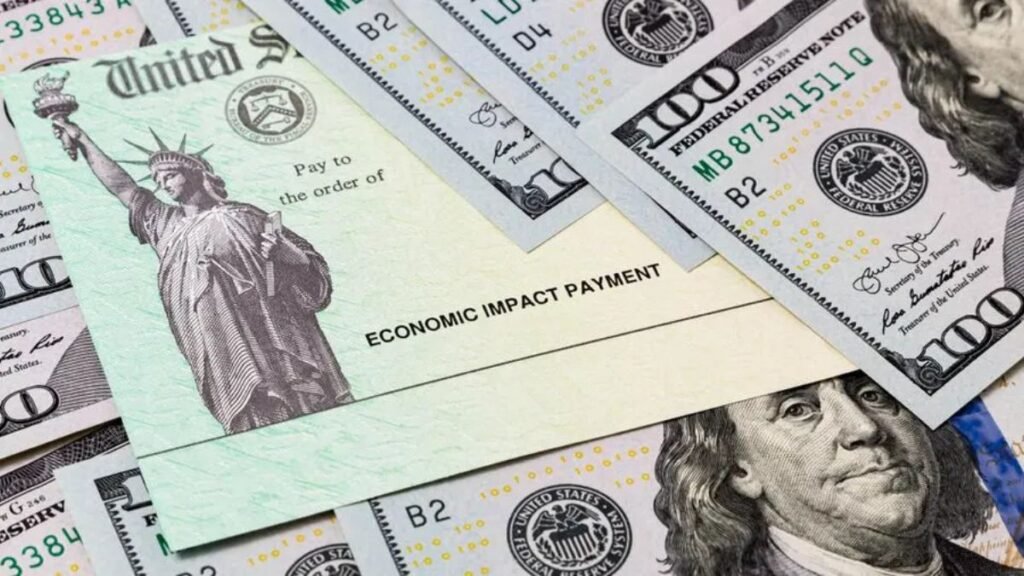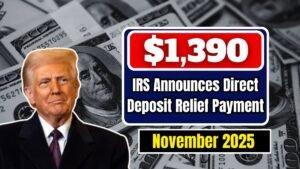$2,000 Stimulus Check Update: Inflation, home rent, and rising prices for daily necessities have put tremendous pressure on living standards in the United States over the past few years. In this context, Donald Trump put forward an attractive proposal on social media and in his campaign: distributing revenue generated from cross-border tariffs directly to Americans. Trump stated that his policies had made the country “richer and more respected,” with the stock market at record levels and inflation significantly lower.
Voters are experiencing a need for immediate relief. This is why so-called solutions like the “$2,000 Tariff Dividend” are gaining increasing popularity. But beyond the popularity, questions remain: is such a plan realistically feasible? Which citizens would be eligible? Will it maintain the country’s financial stability?
The Proposal’s Meaning—What is the Real Plan?
Trump’s proposal is that
- fees collected from tariffs, i.e., the customs duty the government levies on goods imported into the US,
- should not be used for the budget or other expenditures,
- but instead directly transfer $2,000 to every eligible American.
This could be considered a new public relief fund, similar to the stimulus checks issued during the previous COVID pandemic. However, both the source and scale are unprecedented, demanding serious scrutiny of its financial and legal aspects.
The Financial Source of This $2,000 Payment—Calculations and Economics

Let’s examine the calculations behind this proposal.
- The US earned approximately $195 billion in revenue last fiscal year from all tariffs and customs duties combined.
- The additional revenue generated by the new rates imposed during the Trump administration was only around $120 billion.
Now, if we assume that approximately 150 million adult Americans receive $2,000 checks, the total requirement would be $300 billion.
- This is significantly more than the new tariff revenue (almost two and a half times).
- Even if we include the old tariffs, the budget still falls short, as government spending, other marketing, administrative charges, and predetermined allocations are also included in this revenue.
- Therefore, economists say that this plan is not feasible based on current tariff revenue. The government would either have to increase the budget deficit, cut other line items, or impose new taxes—all of which carry significant political risks.
Economic and Social Impact—Relief and Risk Together
Immediate Relief Impact
If implemented,
- Millions of families would receive immediate economic benefits.
- Addressing the current inflationary pressures, the average consumer will have more cash in hand.
- Poor and middle-class citizens will be better able to meet their household expenses, bills, rent, children’s education, and health needs.
Financial and Inflation Risks
- Raising tariffs makes imported goods more expensive, increasing costs for American businesses.
- The burden of higher tariffs ultimately falls on consumers—meaning, in the long run, the average person may have to spend the same amount of money they receive from the government.
- Sociologists believe that repeated direct relief payments like these could discourage people from finding basic jobs or sources of income, impacting productivity.
- Government programs that consistently run in deficits could pose a threat to the country’s debt and economic stability.
- If such cash payment programs are implemented without a proper budget, they could increase inflation and credit market tensions.
Political Discussions and Expert Opinions
There is excitement about this proposal in political circles, especially during the election period.
- Trump supporters argue that this will increase the government’s popularity and provide relief to the public.
- Opposition parties and many economists consider it an “impractical propaganda policy” with neither a realistic budget basis nor long-term benefits.
According to officials, implementing such a plan would require:
- US Congressional approval.
- A legal analysis of the entire budget proposal and subsidies would be conducted.
- All aspects, including administrative costs, distribution processes, and funding sources, would be reviewed.
In fact, the proposal has not yet become law or received financial support.
Eligibility, Distribution Process, and Estimates
If this plan is approved in the future,
- Eligibility will generally be similar to the COVID stimulus—limited to those below a maximum income threshold, citizens or lawful permanent residents, tax filers, and holders of certain benefits.
- Amounts may be sent via direct deposit, check, or prepaid card.
- Distribution will be phased—first to those whose data is available to the IRS.
- Also, transparency of the process will be ensured; official updates will be provided only on government websites and newsletters.
Direct Impact on Businesses and the Common Man
The US economy relies on both imports and exports.
Increasing tariffs:
- American manufacturing may receive some support.
- But domestic companies and consumers may have to pay higher prices.
- Relations with trade-deficit countries, such as China and Mexico, may become strained.
- As buyers’ spending power increases, the more risky it can be to balance imports and domestic production in the country.
Conclusion—The Gap Between Popularity and Practicality
Schemes like the “tariff dividend” appeal to public sentiment and are therefore widely discussed during election season.
But the truth is that:
- Financially, current tariff revenues are insufficient to provide such a significant amount of direct relief.
- There are numerous legal and administrative hurdles, and approval of this scheme could take years.
- Without a strong budget, such schemes could lead to long-term economic imbalances.
This proposal may grab political headlines, but unless it receives legislative approval and an economic basis in Congress,
It will not be a measure that will bring about real change in the lives of ordinary people or the economy.
Voters and citizens are advised not to simply chase popular announcements:
- They must understand the depth of economic logic, budgetary averages, and financial transparency.
- They should take their decisions based on facts and calculations so that the financial position of the country and themselves remains safe and strong in the long term.
FAQs
Q. What is the $2,000 tariff dividend payment proposal?
A. It’s a plan suggested by the White House, backed by Donald Trump, to pay a $2,000 check to low- and middle-income Americans using tariff revenues.
Q. Is there currently enough tariff revenue to fund $2,000 payments for Americans?
A. No. Existing tariff revenue falls far short of what would be needed, with less than half the amount required to fund such a program.
Q. Who would be eligible to receive the payment?
A. If approved, eligibility would likely mirror previous stimulus programs—citizens or legal residents under a certain income level who file taxes.
Q. Could the plan increase inflation?
A. Yes. While it might provide short-term relief, higher tariffs can raise consumer prices and increase inflationary pressure over time.
Q. Has this proposal been approved by Congress?
A. No. It’s only a campaign proposal and has not been legally passed or funded yet.



